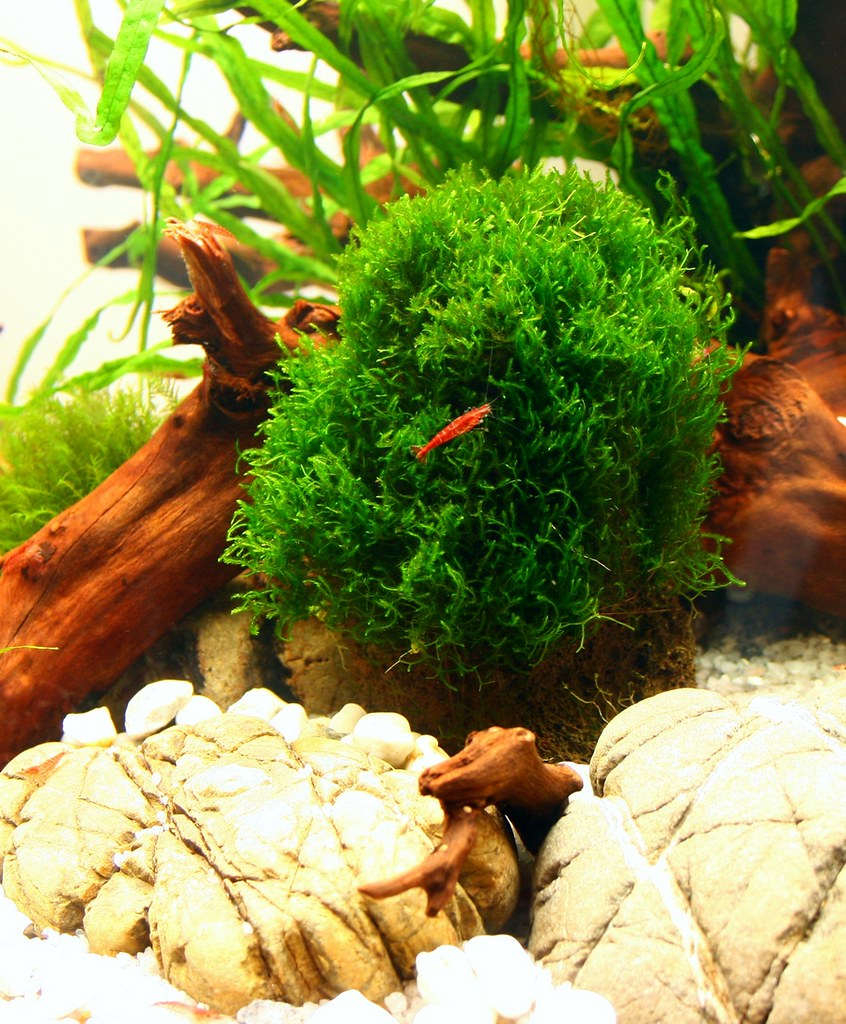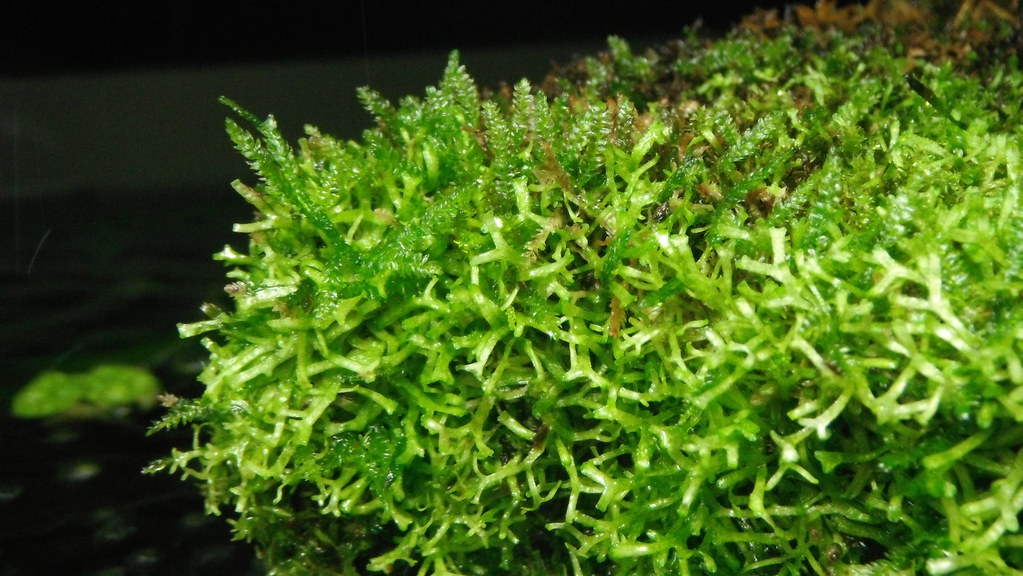There are many types of aquarium moss available and with the growing popularity of this plant the number of choices just keeps growing! Whether you’re choosing simple, easy Java moss or a more fancy type like Christmas moss, it’s always a great option and really helps getting that nice green aquascape.
The list below is definitely not complete, but simply an overview of the types you should be able to find in your local aquarium store or online.
Java moss (Taxiphyllum barbieri or Vesicularia dubyana)
The most popular, well-known and hardy type of aquarium moss is undoubtedly Java moss (pictured above). This type of moss is very easy to keep and will do great in almost any condition from a simple unfiltered snail bowl to a high-tech aquascape.
Almost no maintenance is necessary to keep this moss healthy and green: just trimming it once in a while to prevent the middle parts from becoming brown is usually enough.
Java moss usually grows in longer, thinner strings than other mosses, although its appearance partly depends on the environment it’s grown in and the amount of light it’s exposed to. You can buy Java moss online.

Flame moss (Taxiphyllum sp. “Flame”)
Flame moss is an interesting type of moss that, like Christmas moss, got its name from the way it grows. Contrary to the weeping moss discussed next, the stems of this moss type point upwards, resembling flames. Many aquarists use this to their advantage: Flame moss is a great choice if you’re looking for a more grass-like moss to use as a carpeting plant.
To create a carpet using flame moss, try some mesh tiles attached to the substrate. Like most mosses, Flame moss should be easy to grow and relatively undemanding. Small aquarium inhabitants like dwarf shrimp will appreciate being able to use the bushy fronds to hide and forage in.

Christmas moss (Vesicularia montagnei)
Christmas moss, so called because the stems and leaves often grow in triangular shape that resembles a Christmas tree, is regarded by many aquarists as one of the most attractive looking moss types. It looks best when attached to a surface instead of left floating free and might need a bit more light and care than Java moss.
When its requirements are met Christmas moss can grow into dense, lush clusters. Just don’t expect too much too quickly: many mosses, including Christmas moss, grow quite slowly.
Keep in mind that in certain growth conditions, Christmas moss and Java moss can be quite similar. Make sure you’ve verified you’re buying the correct species to avoid ending up with the wrong moss!
Weeping moss (Vesicularia ferriei)
Though similar to other mosses, weeping moss has an unique feature. It grows downwards, which explains the name and gives it an appearance similar to a weeping willow tree. Its shape makes it very attractive when attached to driftwood or even as a moss tree. Weeping moss grows quite quickly and needs regular trimmings to prevent rot and excessive algae growth.
Extra lighting or Co2 are not a must, but the plant will definitely appreciate it and grow quite a bit faster when they’re provided. Its textured fronds are a source of biofilm, which will be used by dwarf shrimp and fish fry as a source of food.
Phoenix moss (Fissidens fontanus)
This slower growing moss species, originally from the USA, looks very attractive and has feather-like stems. It does best attached to a surface and stays relatively low (closer resembling terrestrial moss), which makes it a great option for covering rocks and driftwood. Due to this low appearance and the slow growth, barely any maintenance is necessary.
Unlike the other moss types discussed here, Phoenix moss requires little to no trimming. Co2 and extra lighting are not necessary to grow Phoenix moss but still appreciated.
Bonus: Marimo moss ball
Okay, fair enough, this one is actually a type of algae called Cladophora that grows into a round shape. It’s commonly referred to as a moss ball, though, and it’ll look great in an aquascape using one or more of the other mosses on this list.
Find out more in the Marimo ball care guide!
For more aquarium plant inspiration and information, don’t forget to have a look at the other articles in the aquarium plants category on Aquariadise!
Cover image: tank 12L by Roman Holba






